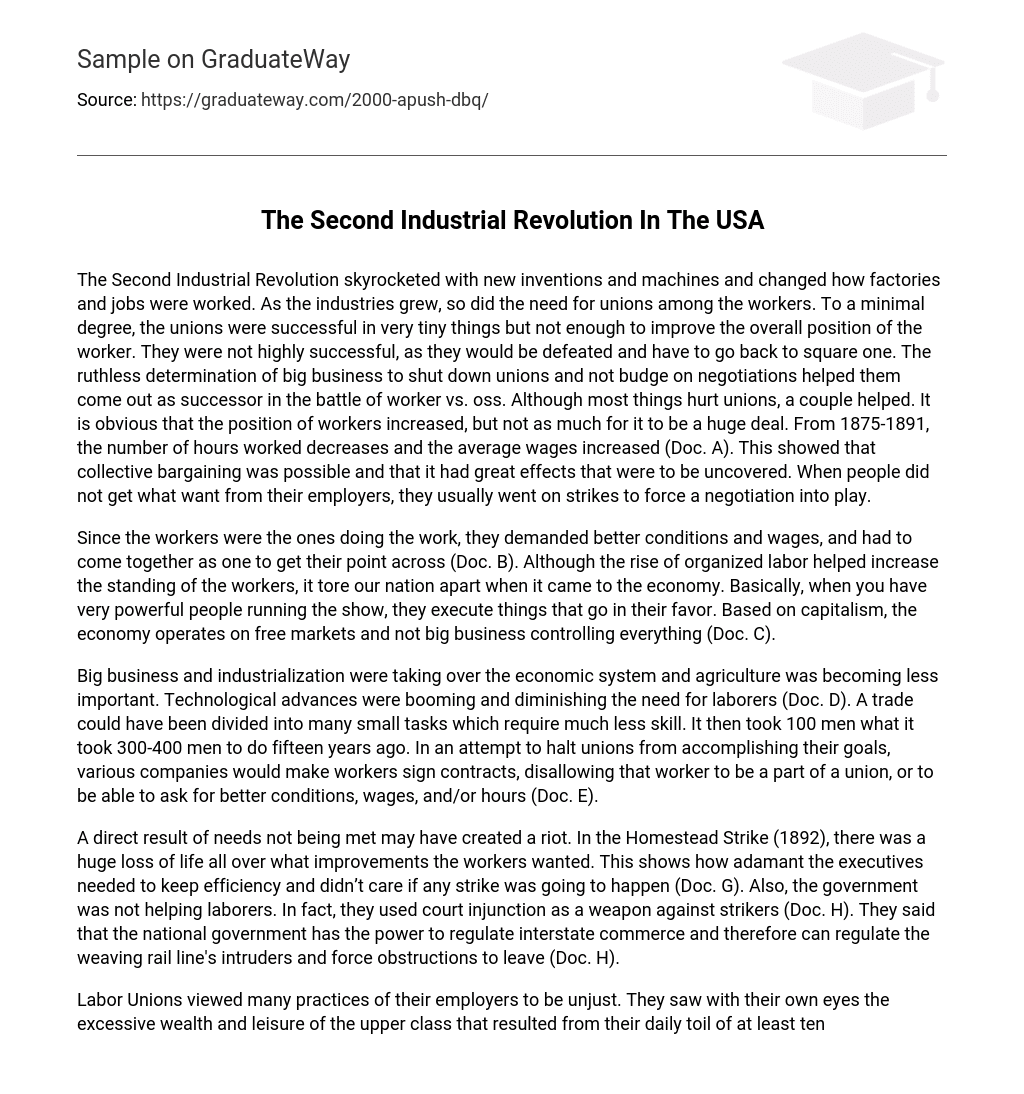The Second Industrial Revolution brought about a surge in new inventions and machinery, leading to significant changes in factory work and employment. The expansion of industries increased the demand for worker unions, but these unions only achieved minimal victories that did not substantially improve workers’ overall condition. They faced frequent defeats as big businesses remained determined to crush unions and refuse concessions in negotiations. Despite some minor gains, workers’ position remained limited. Between 1875 and 1891, working hours reduced and average wages increased, indicating the potential of collective bargaining for positive effects. When employees failed to obtain desired concessions from employers, they often resorted to strikes as a means of exerting pressure for negotiations.
According to Document B, the workers united and demanded better conditions and wages as they were the ones performing the work. On the other hand, the rise of organized labor, although it improved the position of workers, also caused division in our nation’s economy. In essence, the economy, which follows capitalism principles, relies on free markets rather than allowing big businesses to have complete control, as stated in Document C.
Big business and industrialization were becoming dominant in the economy, while agriculture was decreasing in importance (Doc. D). Technological advancements were rapidly occurring and reducing the need for laborers. A trade could now be divided into numerous simple tasks, requiring less skill. As a result, it now took only 100 men to accomplish what used to require 300-400 men fifteen years ago. To prevent unions from achieving their objectives, certain companies would force workers to sign contracts that prohibited them from joining unions or demanding improvements in working conditions, wages, and hours (Doc. E).
A riot may have arisen as a direct consequence of unmet needs. During the Homestead Strike in 1892, numerous lives were lost due to disagreements over worker demands. This illustrates the executives’ strong insistence on maintaining efficiency, regardless of potential strikes (Doc. G). Furthermore, the government offered no support to laborers and, in fact, utilized court injunctions as a means to suppress strikes (Doc. H). These injunctions justified the government’s authority to regulate interstate commerce and compel trespassers on weaving rail lines to vacate (Doc. H).
Labor Unions witnessed many unfair practices by their employers, witnessing firsthand the extravagant wealth and leisure enjoyed by the upper class while laboring for a minimum of ten strenuous hours per day. Despite their arduous efforts, their meager earnings provided just enough to scrape by until the next paycheck. Frequently subjected to mistreatment and faced with wage reductions as low as $10 per week, many union members found themselves in a perpetual state of debt, unable to afford even basic necessities.
The demand for a minimum (livable) wage law and an eight-hour work day targeted these abuses. From 1875-1900, the overall position of workers mostly declined. Despite some minor improvements, they were outweighed by the power of big business. Labor unions still exist to give a voice to the divided working class, but they now have more power than before. These events have prepared us for a future devoid of such injustices, as history commonly does.





